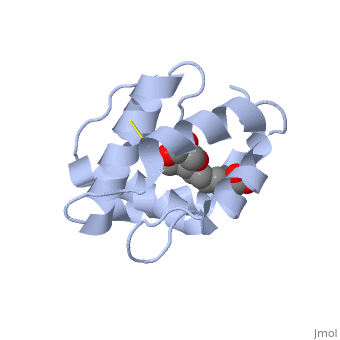Introduction
Pheromone binding proteins (PBP) are type of Odorant binding proteins (OBP) - soluble proteins mediating the early stages of volatiles detection in both insects and vertebrates[1]. The volatiles (pheromones and other small hydrophobic molecules) are solubilized by the OBPs and activate the chemoreceptors.
As a model protein of this family we will further describe the well investigated Pheromone binding protein of the honey bee, ASP1.
Pheromone-binding protein ASP1
Chemical communication is crucial in social insects, where a complicated and delicate system of signals must be maintained in order to preserve the fragile equilibrium between the queen and the workers. In the hive of the honey bee Apis mellifera this equilibrium exists partially due to the extraction of blend of substances called queen mandibular pheromone (QMP), by the queen [2]. The three major component of the QMP blend are: 9-keto-2(E)-decenoic acid (9-ODA) and 9-hydroxy-2(E)-decenoic acid (9-HDA R-(−) or S-(+)).
Pheromone-binding protein ASP1 of the honeybee Apis mellifera L. (Hymenoptera: Apidea) was first isolated and characterized by Danty et al. (1998)[3] from the bee antennae.
Structure
The protein is composed of 144 amino acids, which forms 6 alpha helices. Three formed by 6 Cystein residues tied four helices: disulfide 20–51 between H1 and H3, 47– 98 between H3 and H6, and 107–89 between H6 and H5.
Interaction with the ligand 9-ODA
One of the main components of the QMP , is binding to the protein binding site along with a .The carboxyl end of 9-ODA points towards the solvent, and has no bonds with residues of the protein. The residues in the binding site are , and the connection between 9-ODA and ASP1 involve hydrogen bonds.

